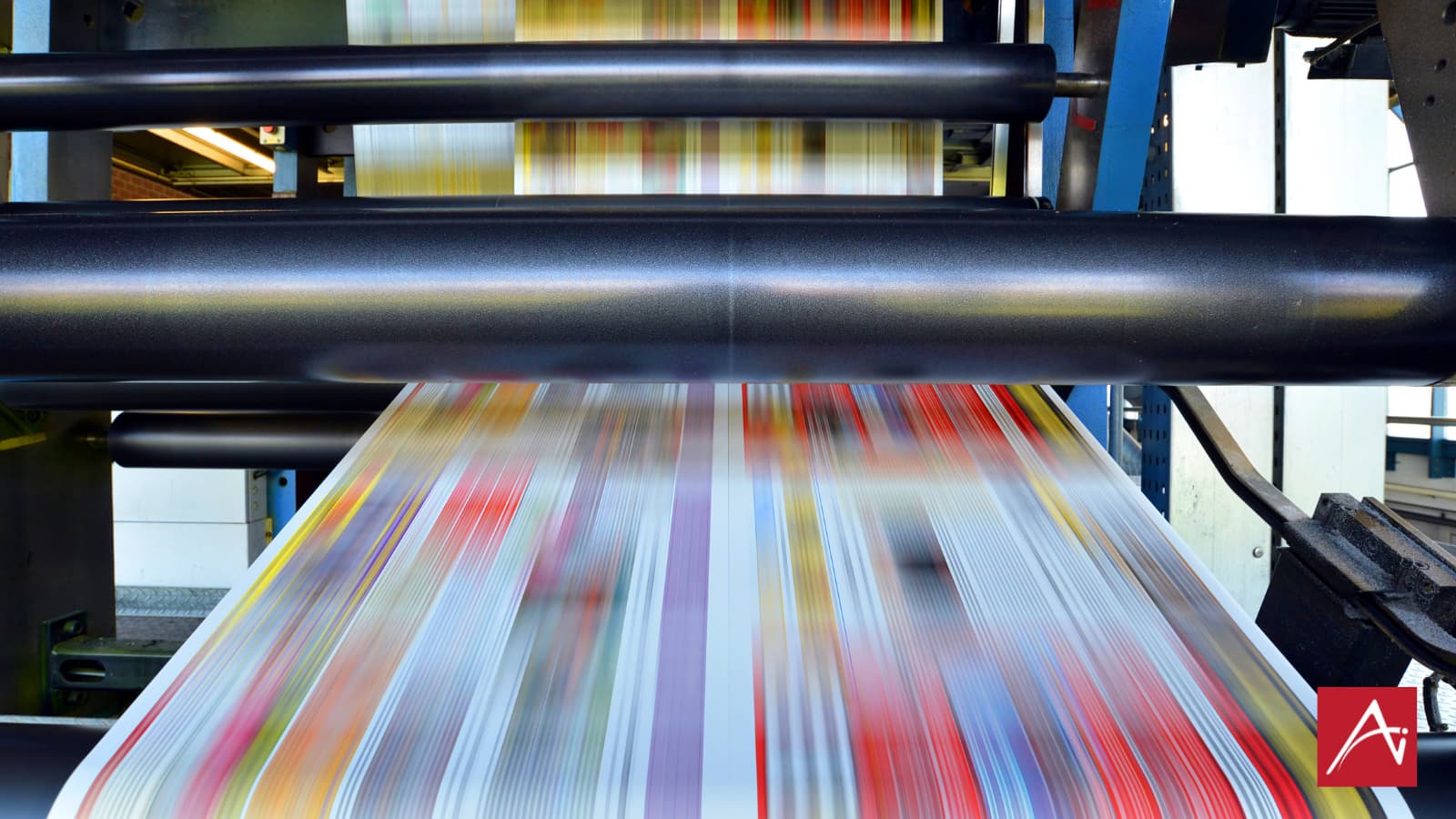You’ve got a printing project coming up and your print vendor asks you if you prefer offset or digital—what exactly are they talking about? What does that mean in terms of cost, timeline, and quality?
To help you decide which service is best for your project, in this post we define both offset and digital printing and lay out the key differences between the two. We even provide five questions you should be asking yourself when determining what is best for your project.
What is Offset Printing?
Offset printing, according to Techtarget, is “a method of mass-production printing in which the images on metal plates are transferred (offset) to rubber blankets or rollers and then to the print media.”
Also commonly known as lithography, offset is a time-tested method that outputs large volumes of prints, making it suitable for regular commercial jobs (i.e. magazines and newsletters)
Offset presses run extremely efficiently once they are set up. This makes offset the best choice when a large quantity is needed. Not only that, offset provides accurate color reproduction, making the print have a crisp and clean professional look.
What is Digital Printing?
On the other hand, digital printing doesn’t use plates the way offset does—it uses toner or liquid ink depending on the type of digital press (i.e. liquid ink, toner or inkjet).
Digital printing’s time to shine is when lower quantities are needed, such as a set of 30 thank-you cards or 150 flyers, or when a quick turnaround is required. Digital also has the unique capability to add variable data to a piece, allowing for greater customization.
Both options produce state-of-the-art print projects. Let’s take a deeper dive into three key differences between the two.
Timing
It’s important to consider the timing of a project before deciding which method of printing you want to use. Do you need something right now? Are you planning for a big project coming down the pipeline? These are all things to think about when making your decision.
- Offset: There is a longer timestamp for offset because plates need to be created and the press needs to be set up before any printing takes place.
- Digital: There is a faster turnaround time for digital because of its ability to be printed on demand.
Quality
Both offset and digital produce great quality prints. However, depending on your needs one may better suit you than the other.
- Offset: You can almost always count on offset for superior, consistent image quality. It’s clean, crisp, and prints images without any streaks or spots. Offset also produces prints with more color accuracy and can mix custom color inks for each job. In addition, you can add an aqueous or UV coating to the piece using an offset press to give it a more professional look.
- Digital: As a trade-off for its ability to produce so quickly, digital prints have slightly lower quality than offset—they just aren’t as sharp or crisp. A postcard that is printed digitally may have the colors rubbed off slightly in the mail without the use of a protective coating.
Material
While materials for digital options are becoming more flexible as time goes on, offset still offers up a larger selection.
- Offset: Offset prints work equally well on almost any kind of material.
- Digital: Digital does have some limitations in terms of the weight of the stock and the types of substrates that can used – with the exception of production inkjet. Advances in production inkjet with UV inks do allow for some plastics and other substrates, but you would need to find a printer with the requisite technology.
5 Questions to ask Before Deciding
If you’re still not sure whether to use offset or digital printing for your next project, ask yourself these four questions to help you decide the service fit for you:
- How large is the project? The greater the quantity of finished pieces you need, the more likely you’ll be using an offset press. Specific numbers vary based on the finished size of the project, but offset presses are the way to go if you’re dealing in a large enough volume.
- Is there a time crunch? If your project needs to be completed ASAP, digital is going to be the one for you. Offset printing simply can’t be done last minute.
- What material are you using? If you’re looking to print on heavier board (i.e. folding cartons) or on a surface other than basic paper (i.e. synthetics), then offset is likely your choice.
- Is there any customization? When it comes to adding variable data, digital is the only real option. In fact, in some instances, it is best to use a hybrid of the two processes. You can print a large quantity of letterheads, or shells, and then add the variable data digitally on those pre-printed pieces.
- Do you need to match pantone colors? If you have a corporate logo or need match specific PMS colors, an offset press is the only way to guarantee color accuracy and brand consistency throughout the production run.
Let’s Get Printing
Ready to make your printing project come to life? Reach out to Associates International today to allow us to make your vision a reality.
Comments are closed.


